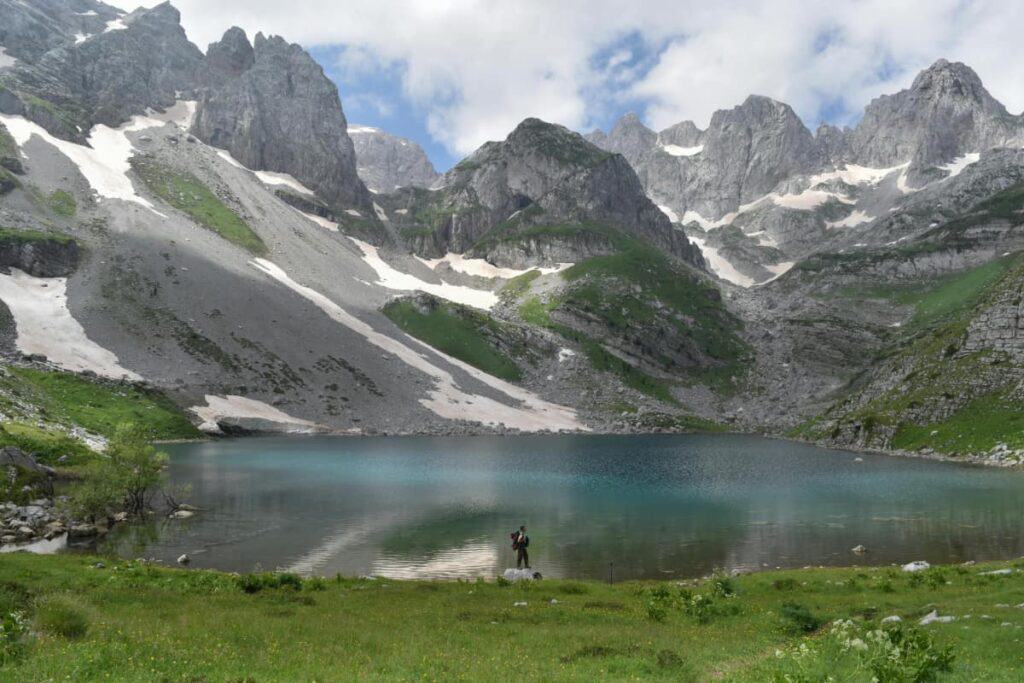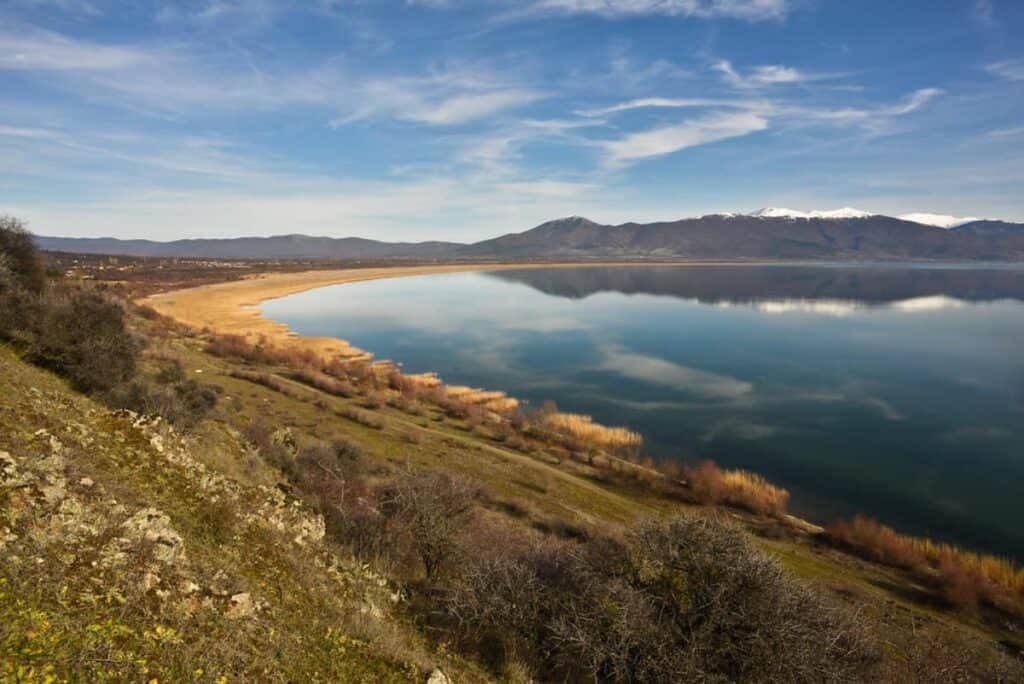Albania is often celebrated for its dramatic mountains and pristine coastline, but its rivers are equally deserving of admiration. Winding through verdant valleys, cutting through rugged mountains, and emptying into the sparkling Adriatic and Ionian Seas, Albania’s rivers are not only vital natural resources but also living witnesses to the country’s rich history and culture.
From the powerful Drin River, Albania’s longest, to the striking Vjosa, known as Europe’s last wild river, these waterways have shaped the landscapes, supported biodiversity, and connected communities for centuries.
A Historical Connection to Rivers
1. Ancient Times
In ancient Illyrian times, rivers were essential for transportation, agriculture, and trade. Settlements grew along their banks, benefiting from fertile soils and access to clean water. Rivers also played a role in religious rituals, often seen as sacred lifelines connecting the people to nature.
2. Medieval and Ottoman Influence
During the medieval period, rivers like the Shkumbin served as key trade routes. Under Ottoman rule, river crossings became vital, with bridges like the Ottoman Bridge of Ura e Mesit near Shkodra standing as engineering marvels of their time.
3. Modern Importance
Today, rivers remain essential for irrigation, energy, and recreation. Efforts to protect Albania’s rivers, particularly the Vjosa, highlight their ecological and cultural significance in the modern era.
Top Rivers in Albania to Explore
1. The Drin River
- Length: 335 kilometers (the longest river in Albania).
- Source: Formed by the confluence of the White Drin and Black Drin in Kukës.
- Why Visit:
- The Komani Lake ferry offers one of the most scenic boat rides in the Balkans.
- The Drin River supports hydropower stations, contributing significantly to Albania’s energy supply.
- Historical Note: The Drin has been a lifeline for northern Albania, shaping trade and settlement patterns for centuries.
2. The Vjosa River
- Length: 272 kilometers (spanning Albania and Greece).
- Why It’s Famous: Known as Europe’s last wild river, the Vjosa flows freely without dams, supporting diverse ecosystems.
- Key Highlights:
- The Vjosa Valley, dotted with traditional villages, offers hiking, rafting, and birdwatching opportunities.
- Permet: A charming town along the Vjosa, famous for its thermal baths and local hospitality.
- Conservation Efforts: The Vjosa has become a symbol of environmental preservation, with ongoing campaigns to protect its free-flowing nature.
3. The Shkumbin River
- Length: 181 kilometers.
- Historical Importance: In ancient times, the Via Egnatia, a Roman road connecting the Adriatic to Byzantium, followed the Shkumbin River valley.
- Why Visit:
- The river flows through Elbasan, a city with a rich cultural and historical heritage.
- The valley offers scenic drives and glimpses into Albania’s agricultural traditions.
4. The Osum River
- Length: 161 kilometers.
- Highlight: The Osum Canyon, often referred to as Albania’s Grand Canyon, is one of the country’s most spectacular natural wonders.
- Why Visit:
- Explore the canyon by kayak or take a guided tour along its cliffs.
- Admire the ancient stone bridges that span the river, like the Bridge of Kasabash.
5. The Devoll River
- Length: 196 kilometers.
- Key Features:
- The river flows through picturesque landscapes in southeastern Albania.
- It is used extensively for irrigation, supporting local agriculture.
- Why Visit:
- The surrounding villages, like Maliq, are perfect for experiencing traditional Albanian rural life.
6. The Aoos River (Vjosa’s Greek Name)
While the Vjosa is primarily in Albania, its Greek section, known as the Aoos, offers another perspective on this majestic river’s journey through the Balkans.
Activities Along Albania’s Rivers
1. Rafting and Kayaking
- The Vjosa and Osum Rivers are prime destinations for rafting enthusiasts, with routes suitable for beginners and experienced adventurers alike.
2. Hiking and Nature Walks
- Follow trails along the Drin River or through the Osum Canyon for unforgettable views and close encounters with Albania’s diverse flora and fauna.
3. Fishing
- Rivers like the Drin and Shkumbin offer excellent opportunities for fishing, with species like trout and carp thriving in their waters.
4. Photography
- Albania’s rivers provide countless opportunities for stunning photos, from the turquoise waters of the Vjosa to the dramatic cliffs of the Osum Canyon.
Cultural Landmarks Along the Rivers
1. Ottoman Bridges
- Ura e Mesit: Near Shkodra, this bridge over the Kir River is a masterpiece of Ottoman architecture.
- Ura e Kasabash: A historic stone bridge over the Osum River, showcasing traditional Albanian engineering.
2. Riverside Towns and Villages
- Shkodra: Located near the Drin River, Shkodra is a cultural hub with its famous castle and vibrant markets.
- Berat: The “City of a Thousand Windows” sits near the Osum River, offering a mix of history, architecture, and natural beauty.
Environmental Significance
Albania’s rivers are not just vital to its ecosystem—they’re integral to its identity. Rivers like the Vjosa have become symbols of Albania’s commitment to environmental preservation. The country is working with international organizations to maintain the ecological balance of its waterways while promoting sustainable tourism.
When to Visit Albania’s Rivers
- Spring and Summer: Best for rafting, kayaking, and hiking. The rivers are at their most vibrant, with clear waters and lush surroundings.
- Autumn: Offers cooler weather and beautiful foliage along riverbanks, perfect for photography.
- Winter: Ideal for quiet exploration and appreciating the rivers’ calm beauty.
Why Albania’s Rivers Should Be on Your Itinerary
Albania’s rivers are more than just natural features—they’re lifelines of culture, history, and biodiversity. Whether you’re rafting through the rapids of the Vjosa, walking along the ancient trade routes of the Shkumbin, or marveling at the grandeur of the Osum Canyon, these waterways offer endless opportunities for exploration and discovery.
For travelers seeking a deeper connection with Albania’s landscapes and heritage, the rivers of Albania are an experience not to be missed.


